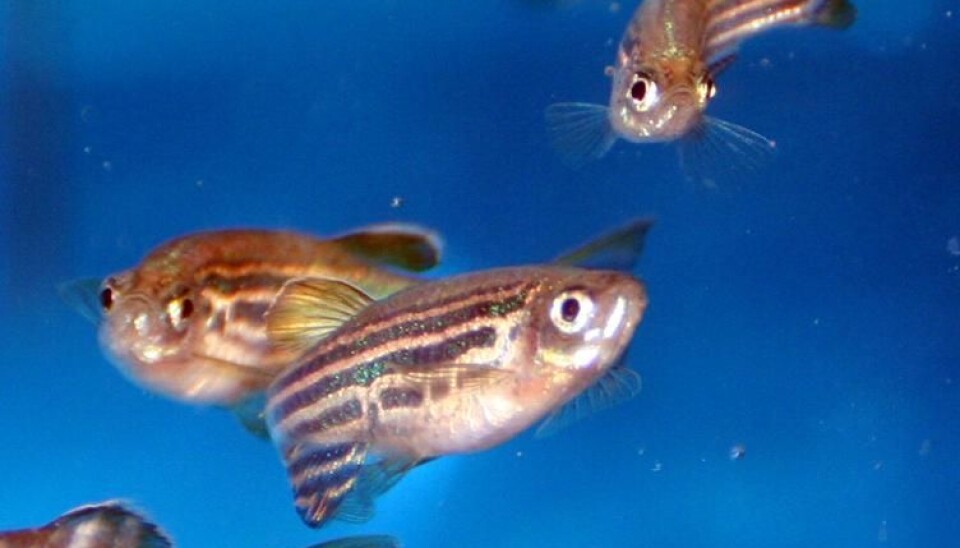
Standard research fish lacks a standard diet
Zebrafish have been used as a research standard to help scientists expand our understanding of everything from skin cancers to cardiovascular disease. But one Norwegian researcher cautions that research that relies on zebrafish might be less reliable because the fish are not fed a standardised diet.
Denne artikkelen er over ti år gammel og kan inneholde utdatert informasjon.
Zebrafish are among the most commonly used model organisms in the research world. But Mari Moren, head of research at the National Institute of Nutrition and Seafood Research (NIFES) in Bergen says it's risky to use the fish as a research standard if its diet is not standardised, too.
“A standardised diet is needed for zebrafish used in scientific experiments," she says. "Otherwise research results will be less reliable.”
Researchers tend to favour zebrafish over lab mice when they need to study vertebrates, particularly because the fish is easy to study in its embryonic stage. It is increasingly being used in studies of disease, nutrition and the impacts of pollution.
Nevertheless, the research world has yet to adopt a standardised diet for the fish.
Wide variety of ingredients

Moren says the vitamin and mineral content of today's commercial zebrafish food can vary significantly. The worst case, she says, is if the researcher is interested in studying exposure to environmental toxins.
"If you don’t know enough about the contents of the feed, you risk masking or intensifying (the fish's) response to a toxin,” she says.
The idea behind the use of a model organism like the zebrafish is that it is supposed to offer researchers a response that can be compared across different experiments.
“This is best ensured when all living conditions, including their feed, are standardised,” she says.
A standard feed needs to have a common recipe to which everyone agrees and which isn’t changed from experiment to experiment, or from lab to lab.
Exaggerated iron levels
Moren and her colleagues at NIFES discussed these kinds of feed-related problems in a recent correspondence in Nature. This is a section of the research journal where scientists can offer brief commentaries on their own or others' results.
“NIFES scientists have analysed the contents of vitamins and minerals in four types of commercially available feed for zebrafish. In two of them we saw exceedingly high iron levels − most likely a toxic level for the fish,” Moren said. “In another of these feeds there was no vitamin C whatsoever. Both these imbalances compromise the health of the fish.”
She points out that another consequence of poor nutrition can be unhealthy offspring from improperly fed zebrafish. Poor nutrition may put experiments at risk if the experiments rely on unhealthy fish.
Risking inaccuracy
Moren says that most researchers think about the quality of the food they give to zebrafish, but that still doesn't compensate for the lack of a standardised feed.
“Without a common standard that addresses the nutritional needs of the fish, we face the risk of inaccurate results,” she says.
The lack of a standard also makes it more difficult to compare research results, which in turm makes it harder for researchers to learn from each other’s work.
Lab mice have been fed a standard feed since the 1970s.
“This helps researchers around the world avoid unwanted variations between otherwise identical experiments. That’s when the variation is due to the differences in the feed rather than, for example, differences in the medicine that is being tested,” Moren says.
-----------------------------
Read the Norwegian version of this article at forskning.no.
Translated by: Glenn Ostling
































